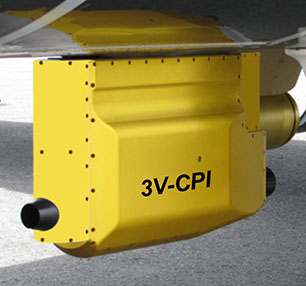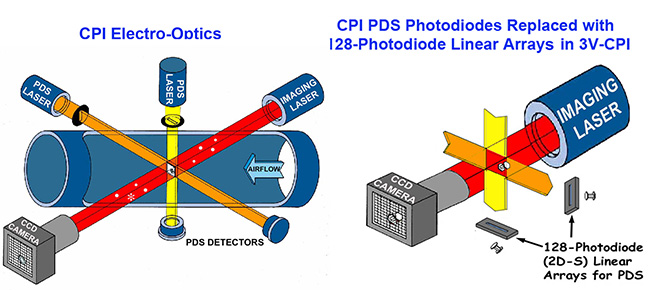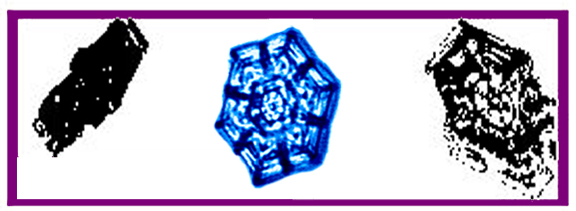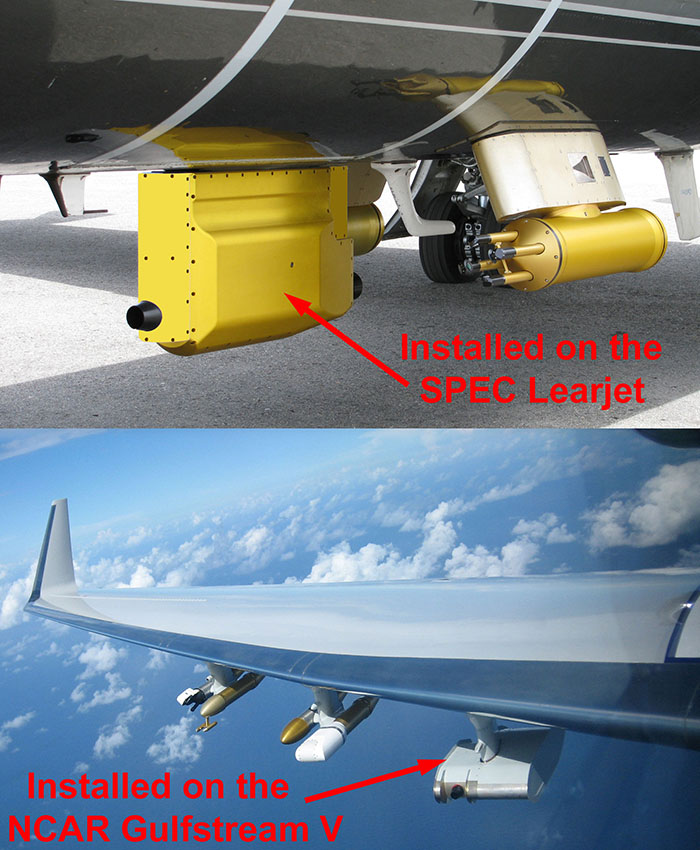3V-CPI Combination Cloud Particle Probe

SPEC developed the 3V-CPI (3-View Cloud Particle Imager) to overcome limitations of the CPI. As shown in the Figure below, the CPI uses single photodiodes for the Particle Detection System (PDS). Because of inhomogeneities in the laser beam intensities and the unpredictable scattering properties of small ice particles, the sensitivity and therefore the detection efficiency of particles < ~ 100 µm is inconsistent. This results in significant uncertainties in the size distribution of particles < ~ 100 µm. To overcome this limitation, SPEC integrated the optics and electronics of its 2D-S probe, which is an optical imaging probe with a linear array of 128-photodiodes, into the 3V-CPI. The optical configuration of the 3V-CPI in the Figure below shows that 128-photodiode linear arrays have replaced the single photodiodes of the CPI. The 3V-CPI is essentially a 400 frame per second CPI probe integrated with a 2D-S probe.

Schematics of (left) CPI and (right) 3V-CPI electro-optics
The 2D-S portion of the Hawkeye has two 10-µm channels that are fully functional optical array probes and also provide the particle detection system (PDS) for the CPI. The result, as shown in figure below, is three sets of particle images. When a particle passes through the overlap region of the two PDS beams, three images of the same particle are recorded, as shown in the Figure below. When a particle passes outside the overlap region, but still intersects one of the PDS beams, a 10-µm pixel resolution image is recorded.

Example of 3 Views of an ice crystal. Center image is from CPI and left and right images are from 2D-S
3V-CPI COMPONENTS INCLUDE:
- 3V-CPI Sensor Head
- Data Acquisition/Power System with 19” Industrial, Rack-mount Computer, Flat Panel Display, Mouse and Keyboard
- Test Cables (6 ft.) and Connectors
- 3V-CPIview Post-processing Software with eXtractor Toolbox
- Operator Manual
- Atlas Shipping Case for Sensor Head
- 1-Year Limited Warranty on Parts and Labor
3V-CPI TECHNICAL SPECIFICATIONS
- Version 2.5 Cloud Particle Imager (CPI) with 1024 x 1024 pixel CMOS camera and data acquisition system capable of taking and recording 2.3 µm/ pixel-size digital images of cloud particles with 8-bit grey scale (256 levels) at a maximum frame rate of 400 frames per second.
- 2D-S particle detection system to detect cloud particles and trigger imaging laser with 25 ns laser pulse that freezes motion of particle and images particle on CMOS camera.
- Data acquisition system includes software that identifies and saves only regions with particle images.
- Data acquisition system displays particle images, histograms of particle sizes and housekeeping data in real time.
- Records data on data system via fiber-optic and Cat6 cables.
- Dual-Channel (2D-S) imaging probe with dual 128-element photodiode arrays generates two independent two-dimensional Images of particles with 10-um pixel resolution.
- Probe mounts in the same footprint as the Version 2.5 CPI and is hermetically sealed with a maximum leak rate of 0.5 psi per hour for 6 hours at an ambient pressure of 6 psi.
- Probe sensor weighs 28 Kg.
- Power: 115 VAC 60 Hz or 400 Hz.
- Probe sensor head is hermetically sealed and operates up to 60,000 feet altitude.
- Post-processing software sizes cloud particles, computes particle area, perimeter, ice crystal habit and automatically separates images into ice particles and water drops.
3V-CPI’s have been successfully flown on multiple research aircraft including the SPEC Learjet, NCAR Gulfstream V, and the NCAR C-130 (see Figures).

